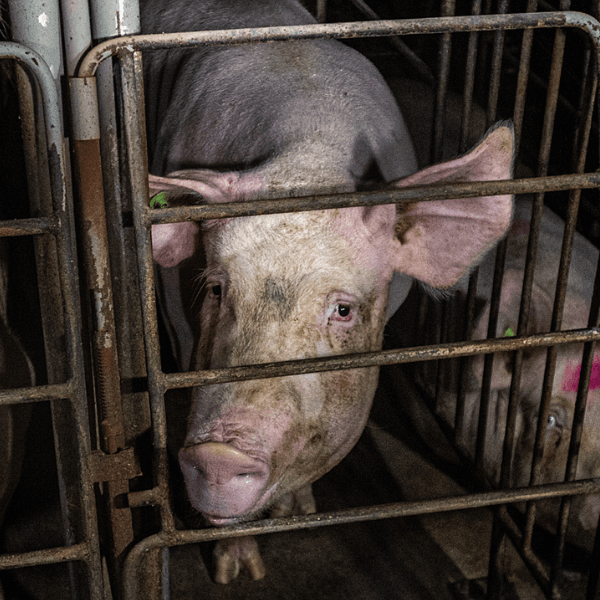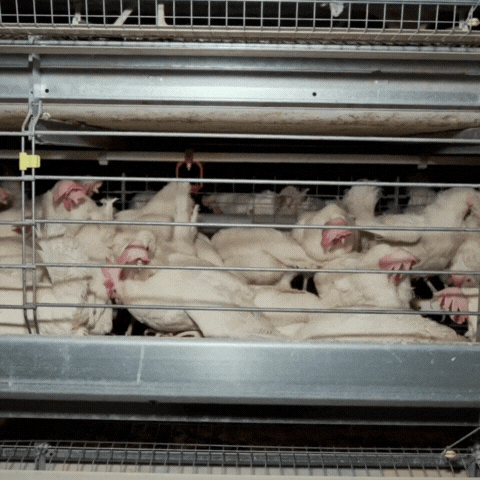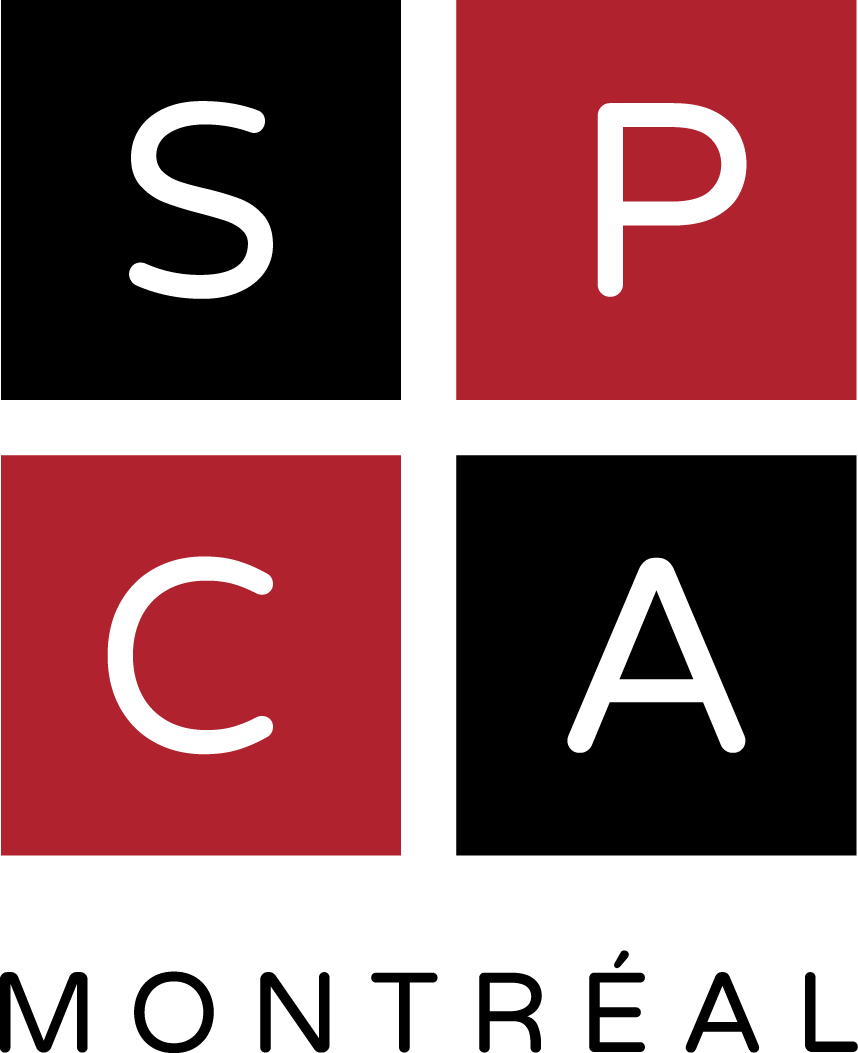It’s time to do better for farmed animals
In Canada, the vast majority of animals used for food production are still raised in industrial (or “intensive”) farming conditions where housing systems and practices are designed to maximize production while keeping costs to a minimum.
To date, farmed animals such as cows, chickens, and pigs and other farmed animals still benefit from almost no legal protections.
Although laws exist to regulate the transport and slaughter of farmed animals, there are no federal laws on the books that govern how animals are treated on the farm.

Fig. 1
Make animal protection a key electoral issue in Canada!
The upcoming federal elections provide a unique opportunity to secure commitments, raise awareness and create new political allies to support a range of animal welfare issues.
Take an active part in making the voice of animals heard in Ottawa by writing to your MP today.
Fig. 2, 3 and 4
SELF-REGULATING INDUSTRIES
The current situation essentially allows the private sector to govern itself when it comes to animal welfare, which we believe is an abdication of public responsibility on the government’s part. It seems counterintuitive to give an industry that handles millions of sentient beings the power to self-regulate.
VOLUNTARY STANDARDS
In the agri-food industry, there are Codes of Practice the for animal care and handling of farmed animals, developed and reviewed by the National Farm Animal Care Council (NFACC). Industry stakeholders, however, play an integral role in the development and review of codes of practice, even have a majority representation on the code development committees.
Furthermore, the codes are not legally binding in Quebec, nor in the majority of provinces, and compliance with these codes is strictly voluntary.
ONE STEP FORWARD, TWO STEPS BACK
On top of these industries deciding their own standards, even when the decisions are being made, opportunities for the public to have their voices heard are limited. The Code of Practice that covers laying hens― which was written in 2017 and allows producers to permanently confine hens in cages, despite widespread support from the Canadian public for a ban on cage confinement ― is currently under review. Yet NFACC is only reviewing three sections of the Code of Practice, and the producer-led process is leaving no opening to address the egg industry’s most controversial practice: permanently confining laying hens in cages.
While other countries are quickly increasing cage-free egg production year-over-year, the percentage of hens kept in cage-free housing in Canada has barely changed in since 2019.

Fig. 5
Left up to self-regulation and voluntary standards, animal-use industries will take decades to catch up to modern science and public opinion. Just like our companion animals, farmed animals deserve to be protected with meaningful, mandatory standards, as is the case in many jurisdictions around the world. This kind of a regulatory framework will benefit producers already mindful of animal welfare and could encourage others to adopt best practices.
ASK FEDERAL POLITICAL PARTIE TO COMMIT TO PROTECTING FARMED ANIMALS
More than 27 million laying hens are used by the Canadian egg industry each year. Almost all of them spend their entire lives in small, wire cages.
For more than a decade, the biggest grocers and food retailers in Canada have been asking producers to transition to higher welfare systems, such as cage-free housing for laying hens and crate-free barns for breeding sows. While some producers have made the effort to move away from intensive confinement systems, many have dragged their feet or disregarded corporate demands altogether by installing new cage systems that will last for years. Farmed animals in Canada need strong, legal protections to level the playing field and ensure than all producers keep up with minimum welfare standards that let animals express natural behaviours and prevent the worst types of suffering.
Fig. 6
FAQ
The vast majority of animals intended for food production in Quebec are raised in industrial (or “intensive”) farming conditions where housing systems and practices are designed to maximize meat, egg or milk production while keeping costs to a minimum.
This type of farming involves housing animals at high densities in closed buildings. Animals are confined to very small spaces, with very little room to move comfortably, express their natural behaviours or engage in normal interactions with others of their kind. Examples include laying hens kept in cages, sows confined to gestation crates, and dairy cows in tie stalls.
In 2015, through the passing of the Act to Improve the Legal Situation of Animals, a new provision was added to the Civil Code of Quebec recognizing that animals are not property but rather sentient beings. A new law focusing exclusively on animal welfare, the Animal Welfare and Safety Act, was also enacted. However, animals used for agricultural purposes are excluded from this law’s main protections.
At the time of the 2015 legislative changes, the then Minister of Agriculture also promised a regulatory framework for farm animal welfare. But 8 years later, regulations for farm animals have yet to be enacted.
Section 7 of the Animal Welfare and Safety Act excludes all animals used for agricultural purposes from its main protections, namely those included in sections 5 (requirement for an animal’s owner or custodian to provide them with water, food, shelter, care, etc.) and 6 (prohibition on causing distress to an animal), provided they are treated in accordance with the “generally recognized rules” of the industry. However, no such rules are defined in the Act. Thus, so long as a significant portion of the industry adopts a particular practice, it is considered consistent with the “generally recognized rules”. It is therefore the industry itself that determines which practices are exempt from the Act and therefore legal.
This is why it is perfectly legal, and even common practice, to castrate a piglet without anesthesia, whereas if the same procedure were performed on a dog or a cat, it would be punishable by a conviction and even a prison sentence.
The exemption set out in section 7 of the Animal Welfare and Safety Act excluding all animals raised for food from its main protections essentially allows the private sector to regulate itself and thus represents an abdication of public responsibility on the government’s part.
In the agri-food industry, most sectors that use animals are already involved, through the National Farm Animal Care Council (NFACC), in the development and review of codes of practice for animal care and handling. These codes are nationally developed guidelines and reflect recommended animal rearing practices. However, they are not legally binding in Quebec, and compliance with these codes is strictly voluntary.
SPCAFurthermore, the industry plays an integral role in developing the codes and even has a majority representation on the code development committees.
Some sectors claim to require their producers to comply with the Codes of Practice. Even if this is the case, the fact that compliance with certain standards is made mandatory by the industry itself rather than by government raises several issues. First, the system put in place to ensure compliance typically relies on the industry auditing itself rather than independent third-party verification. Second, the penalties for noncompliance are also determined by the industry itself. Lastly, because it is a private monitoring system, it is not subject to the same transparency and accountability requirements as those associated with a public oversight system.
Certain provinces, such as Newfoundland and Labrador and Prince Edward Island, have made adherence to NFACC Codes of Practice mandatory.
While there are no regulations governing how animals are treated on farms, their transport and slaughter are regulated by certain federal and provincial laws.
The transport of animals raised for food is regulated by the federal Health of Animals Regulations and the provincial Animal Welfare and Safety Act. Their slaughter is governed by the Safe Food for Canadians Regulations at the federal level and the Regulation Respecting Food at the provincial level.
In many other parts of the world, particularly in Europe, laws or regulations have been adopted to impose mandatory standards of care for all animals, including animals used for agricultural purposes. In Switzerland, for example, detailed regulations for each species and type of use have been developed.
Several practices that seriously compromise farm animal welfare and that have been banned elsewhere in the world—precisely for this reason—are still widespread in Quebec. For example, confining animals in very small spaces, thereby depriving them of the ability to move around comfortably, to engage in their natural behaviours and to interact normally with others of their kind, is common practice in most Quebec agri-food sectors. This is the case for laying hens kept in battery cages, sows confined to gestation and farrowing crates, and dairy cows in tie stalls.
Another kind of practice, also still common in Quebec but prohibited elsewhere, is systematic mutilation without adequate pain control. Calf and lamb castration, lamb tail docking and the partial debeaking of laying hens are all commonly practiced without any analgesia or anesthesia in Quebec. And as for piglets, they are castrated without anesthesia. Yet the Canadian Veterinary Medical Association (CVMA) considers many of these practices to be painful procedures for which both anesthesia and analgesia are required.
The Montreal SPCA believes that the agricultural industry should be required to disclose the farming methods used to produce meat, dairy and eggs through mandatory labelling. We in fact submitted comments to this effect to the Canadian Food Inspection Agency (CFIA) in 2019 during a consultation held as part of the agency’s Food Labelling Modernization initiative.
Not only is there no mandatory labelling required for animal products, but animal welfare claims on food products are unregulated and therefore unverifiable for consumers. The term “free-run eggs,” for example, which is frequently used on egg packaging, is not regulated, so its use does not reflect specific standards and is not verified. In addition, the term is misleading because “free-run” hens are typically permanently housed indoors and packed in densities nearly as high as in caged production.
The issue clearly doesn’t stem from the producers as individuals but rather from the system in which they operate. A regulatory framework with prescribed and mandatory standards will only benefit productions that are already concerned about animal welfare and will ensure that all others adopt best practices in a consistent and regulated way.
There is broad scientific consensus that these animals are just as capable of feeling pain and suffering as our dogs, cats and other companion animals. The further research progresses, the more science tells us that many animals have significantly more complex cognitive and emotional abilities than we initially suspected—and this applies as much to dogs and cats as it does to cows, pigs, chickens and other mammals and birds raised for food production. It is therefore necessary for the interests and needs of all animals to inform the way we treat them.
Yet animals raised for food are systematically excluded from the law’s main protections despite being sentient beings, with complex cognitive and emotional abilities. As a result, subjecting them to several painful practices which cause suffering remains permitted, when these same practices would be considered criminal if performed on dogs or cats, for example.
Photo credit:
- Fig. 1 Photography: © Jo-Anne McArthur / We Animals, Quebec, Canada, 2022.
- Fig. 2 Photography: © Jo-Anne McArthur / We Animals, Quebec, Canada, 2022.
- Fig. 3 Photography: © Jo-Anne McArthur / We Animals, Quebec, Canada, 2022.
- Fig. 4 Photography: © Abigail Messier / We Animals, British Colombia, Canada, 2024.
- Fig. 5 Video: © Abigail Messier / We Animals, British Colombia, Canada, 2024.
- Fig. 6 Photography: © Abigail Messier / We Animals, British Colombia, Canada, 2024.






